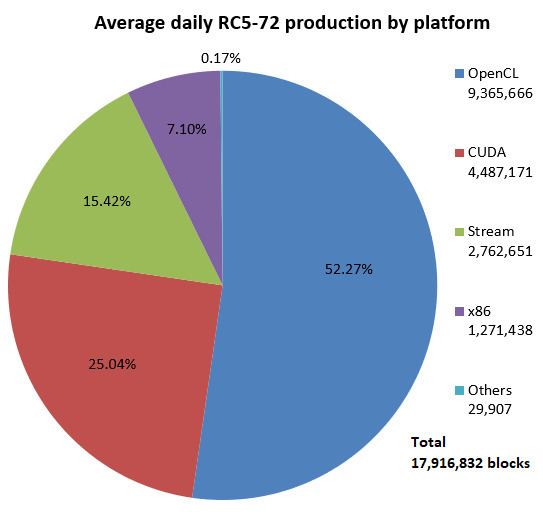Type of site volunteer computing Alexa rank 566,939 (January 2015) | Website distributed.net Launched 1997 | |
 | ||
Owner Distributed Computing Technologies, Inc. | ||
distributed.net is a distributed computing effort that is attempting to solve large scale problems using otherwise idle CPU or GPU time. It is governed by Distributed Computing Technologies, Incorporated (DCTI), a non-profit organization under U.S. tax code 501(c)(3).
Contents
distributed.net is working on RC5-72 (breaking RC5 with a 72-bit key), and OGR-28 (searching for the optimal 28-mark Golomb ruler). The RC5-72 project is on pace to exhaust the keyspace in just under 150 years, although the project will end whenever the required key is found. Both problems are part of a series: OGR is part of an infinite series; RC5 has eight unsolved challenges from RSA Security, although in May 2007, RSA Security announced that they would no longer be providing prize money for a correct key to any of their secret key challenges. distributed.net has decided to sponsor the original prize offer for finding the key as a result.
In 2001, distributed.net was estimated to have a throughput of over 30 TFLOPS. By 2009, throughput was estimated to be much higher.
History
A coordinated effort was started in February 1997 by Earle Ady and Christopher G. Stach II of Hotjobs.com and New Media Labs, as an effort to break the RC5-56 portion of the RSA Secret-Key Challenge, a 56-bit encryption algorithm that had a $10,000 USD prize available to anyone who could find the key. Unfortunately, this initial effort had to be suspended as the result of SYN flood attacks by participants upon the server.
A new independent effort, named distributed.net, was coordinated by Jeffrey A. Lawson, Adam L. Beberg, and David C. McNett along with several others who would serve on the board and operate infrastructure. By late March 1997 new proxies were released to resume RC5-56 and work began on enhanced clients. A cow head was selected as the icon of the application and the project's mascot. The RC5-56 challenge was solved on October 19, 1997 after 250 days.
The next project was the RC5-64 challenge which took nearly five years to complete before the correct key (0x63DE7DC154F4D039) was found on July 14, 2002 decrypting the message to the plaintext "some things are better left unread".
Client
"dnetc" is the file name of the software application which users run to participate in any active distributed.net project. It is a command line program with an interface to configure it, available for a wide variety of platforms. distributed.net refers to the software application simply as the "client". As of May 2009, 32-bit Windows on Intel x86 is the most used configuration, with Linux on Intel x86 in second place, and Mac OS X on PowerPC in third place.
Portions of the source code for the client are publicly available, although users are not permitted to distribute modified versions themselves.
Development of GPU-enabled clients
In recent years, most of the work on the RC5-72 project has been submitted by clients that run on the GPU of modern graphics cards. Although the project had already been underway for almost 6 years when the first GPUs began submitting results, as of January 2017, GPUs represent 76% of all completed work units, and complete over 93% of all work units each day.
